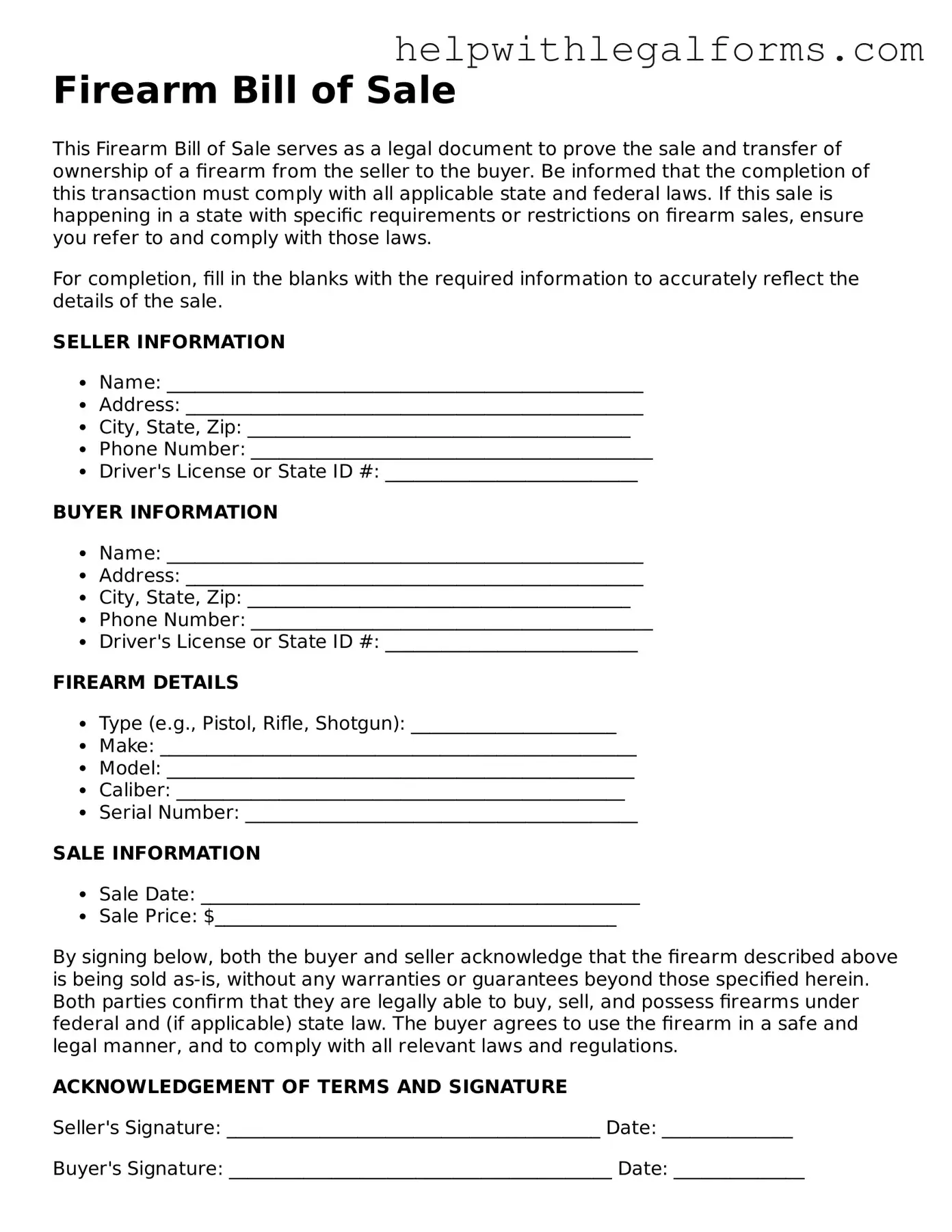What is a Firearm Bill of Sale?
A Firearm Bill of Sale is a legal document that records the sale or transfer of a firearm from one person (the seller) to another (the buyer). It includes important information such as the make, model, caliber, and serial number of the firearm, as well as the personal details of both parties involved in the transaction. This document serves as a proof of purchase and can be used for registration purposes or to prove ownership.
Why is a Firearm Bill of Sale important?
Having a Firearm Bill of Sale is crucial for several reasons. It provides legal protection for both the seller and the buyer by documenting the transaction in detail. This can be especially important if the firearm is ever lost, stolen, or used in a crime, as it establishes the chain of ownership. Additionally, it may be required by law in some states for the private sale of firearms.
What information should be included in a Firearm Bill of Sale?
A comprehensive Firearm Bill of Sale should include the full names and addresses of both the buyer and the seller, the date of the sale, details of the firearm (make, model, caliber, and serial number), the sale price, and signatures of both parties. Some forms also include terms and conditions of the sale, such as warranty information or return policies.
Is a Firearm Bill of Sale legally required?
The requirement for a Firearm Bill of Sale varies by state. While not all states mandate the use of a bill of sale for private firearms transactions, it is strongly recommended to have one to create a record of the sale. It's important to check local laws and regulations to ensure compliance with any specific requirements.
Can a Firearm Bill of Sale be used for registration purposes?
In some cases, a Firearm Bill of Sale can be used as part of the process to register a firearm with local law enforcement agencies, depending on local laws and regulations. It provides documented evidence of the change in ownership which can be necessary for registration. Always verify with local authorities to understand the specific requirements.
How does a Firearm Bill of Sale protect the seller?
For sellers, a Firearm Bill of Sale provides evidence that the firearm was legally transferred to another individual. This can be crucial if the firearm is later used in a criminal activity or found in the possession of someone else. It releases the seller from liability by documenting that the seller no longer owns the firearm.
How does a Firearm Bill of Sale protect the buyer?
The buyer benefits from a Firearm Bill of Sale as it serves as proof of ownership and purchase. Should any questions arise about the legality of the firearm or its ownership, the buyer can present the document as evidence that the purchase was conducted legally and that the firearm was obtained from a legitimate source.
What are the consequences of not using a Firearm Bill of Sale?
Not using a Firearm Bill of Sale can lead to various legal complications. Without it, proving ownership or the legality of a transaction becomes significantly harder. In scenarios where the firearm's history is questioned, not having a bill of sale could implicate the seller or buyer in legal issues they were not involved in. It can also complicate the process of registering the firearm, if required.
Can I create a Firearm Bill of Sale on my own?
Yes, it's possible to create a Firearm Bill of Sale on your own, as long as it contains all the necessary information required by law and both parties involved in the transaction. There are templates available online; however, ensure that any template used complies with local laws and regulations of your state. For added protection, consider having the document reviewed by a legal professional.
